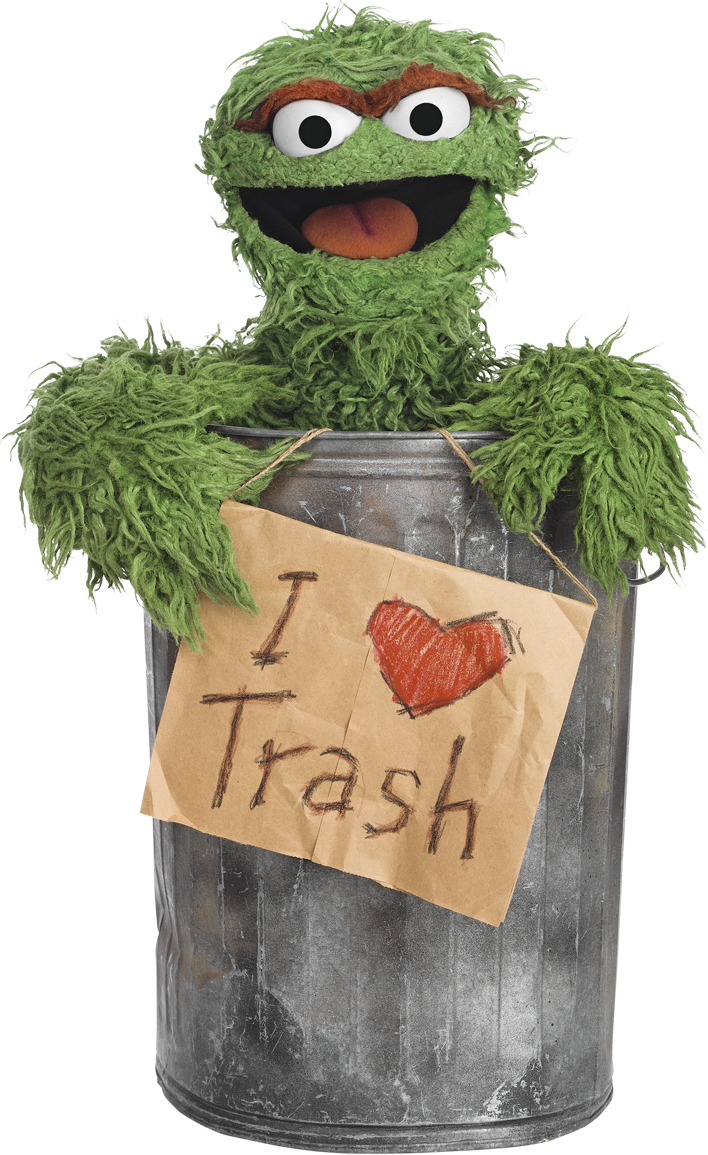I’ve always felt a special connection to Oscar the Grouch– and not just for his misanthropic nature and hoarding of seemingly useless items (although certainly that is part of it). Primarily, my love stemmed from our mutual interest in trash. Growing up, the cemetery behind my house had a big, beautiful pile of junk hunkered down in a far corner where my brother and I would spend our days exploring for snakes and lizards, which we would try to catch with our bare hands. While in retrospect it’s incredible that neither of us ever fell on a hypodermic needle, I enjoyed every minute I spent in that trash pile; because, even if the snakes were all hiding, I could always find some cool, gross thing tucked among the grass and woodscraps. Although (at my dad’s reasonable request) I never really rummaged through the different piles, I loved to just examine them and make up stories about where they came from, who deposited them, and why.
Learning about garbology allowed me to take my childhood past time to the next level. Working on the lab this last week, I was transported back to that cemetery garbage pile, where once again I was crouched next to a mound of junk, working to figure out what it meant.
Garbage piles are funny in that they don’t give any context to the deposition. Who was dumping this? Where did it come from? What made a person (or group of people) think, “Ah yes, this open corner of a cemetery is the best place for me to leave my old couch!?” Context has to be inferred from the material itself– and that’s archaeology. Thinking about archaeology as basically your neighbor’s garbage is a useful way to conceptualize the process and understand the biases and processes that work into the archaeological record.
The garbage I examined really made me think about this. One of the hardest aspects of analysing the “assemblage,” if you will, was thinking about how many people contributed to the deposit and deciding the purpose of the deposit (besides the obvious ” to get rid of trash” purpose). These factors would greatly influence the narrative I created. If it was kitchen trash versus personal trash, if it was one persons’ refuse or two– the garbage itself didn’t come with an instruction book. However, I soon realized that I was thinking too much about the garbage as a whole, and not listening to what the pieces of paper and apple cores were really trying to tell me. Once I changed the way I conceptualized the trash, it all began to fit together.
In all, I believe that garbology is a great way to practice archaeological techniques in a modern setting that helps you contextualize and conceptualize processes and human behavior behind disposal. I fully encourage everyone to take a little time out of their day to peer into someone else’s trash. There is no limit to what you can learn about your friends, enemies, neighbors and ancestors by spending a little time with your inner Oscar.


Ema, given your early love of trash, I’m not surprised by your current interests! I do wonder how the trash deposit you played with as a child would look today, or even 100 years into the future. As you say, trying to determine why a deposit was created it and who was responsible for its creation is a quite low-level question, but also rather challenging.